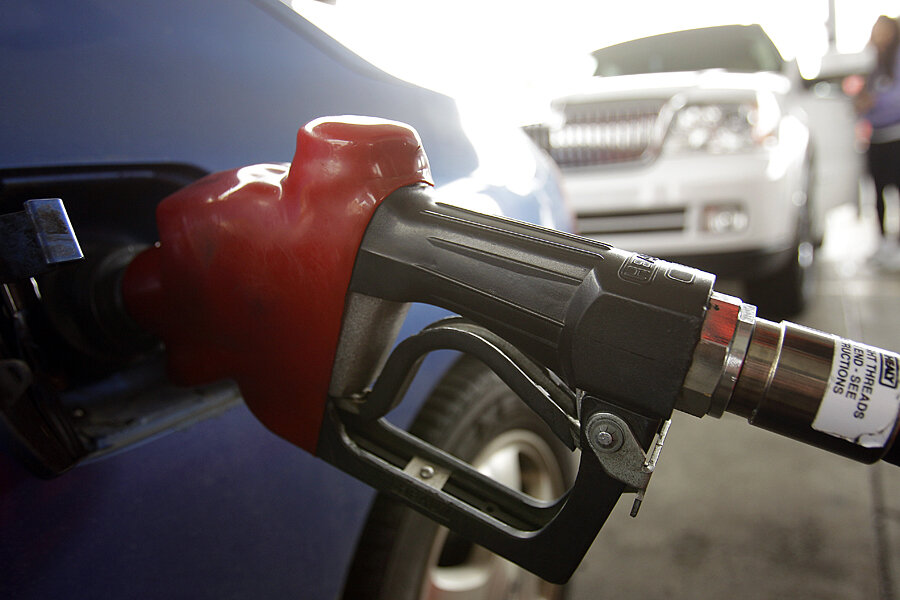Auto industry ahead of schedule in reducing emissions
Loading...
The auto industry came very near to the precipice in 2009, and it agreed to significant new regulations to enable it to step back from the brink.
Now, it turns out that it's not only meeting, but actually beating, the required reductions in emissions.
That means that, according to the US Environmental Protection Agency, improvements in fleet average fuel economy are actually running ahead of schedule.
The good news comes from industry trade journal Ward's Auto, which notes that the auto industry is "ahead of the curve" in cutting fuel consumption in new vehicles.
Multiple innovations, faster
Innovations in fuel-saving technology are "coming at us faster than originally anticipated,” according to Michael Olechiw. He's the director of the Light-Duty Vehicle Center at the EPA's laboratory in Ann Arbor, Michigan.
Among the technologies that have arrived more quickly than expected: continuously variable transmissions (CVTs), automatic transmissions with more than six gears (up to nine), direct injection, and diesel engines in light-duty passenger vehicles like SUVs and crossover utilities.
Drivetrain electrification also continues, but the cost of high-voltage battery packs, electric motors, and the associated power electronics--whether in conventional hybrids, plug-in hybrids, or battery-electric vehicles--will have to come down further before they are competitive with some of these other technologies.
Lightweighting and simple start-stop systems are also having an effect, and it's the combined reductions from all of the above in different combinations that seem to make the EPA confident that the requirements can be met.
One-third meet 2016 rules, today
Nearly one-third of U.S. vehicles on sale today already meet the required standard for 2016, he said. That rule requires the sales-weighted fleet average to reach 35.5 mpg in 2016, and 54.5 mpg in 2025.
Note that those figures are based on specific and outdated but set-in-stone test cycles, before adjustments that better match the fuel-economy ratings to actual real-world conditions.
So that 54.5 mpg "CAFE number" translates to roughly 42 mpg on a new car's window sticker.
And the news continues to get better for July: According to the University of Michigan's Transportation Research Institute, the sales-weighted fuel economy average rose to 25.6 mpg last month from 25.5 mpg in June.
The weighted average gas mileage number has risen more than 20 percent from its baseline in October 2007, the month in which the UM-TRI began its reporting.
Moreover, the 2015 Ford F-150--the industry's best-selling vehicle line--hasn't yet hit the market.
Notably higher fuel economy from half a million pickups with a weight reduction of up to 700 pounds each, due to the aluminum body and bed, may move the needle perceptibly all by itself.
Mid-terms on the way
The EPA presentation foreshadowed an assessment of the CAFE rules, and how they're working, that's required by law after the first wave of rules has taken effect.
The agency will issue its report by November 15, 2017--a little more than three years hence--and make its final determination on how the industry has performed by the following April.
If the hearings follow the usual form, the automakers and their representatives (including dealer bodies) will likely protest that their industry cannot possibly meet the regulations at a reasonable cost, and that the increased price of vehicles will hurt sales, lower production, and destroy jobs.
Environmental groups, other nonprofits, and perhaps a few automakers at the head of the curve will likely point to the significant progress already made, and argue that economies of scale and continually falling battery costs make lower- and zero-emission vehicles ever more practical at reasonable prices.
Mix, stir, sit back and watch.
So consider this your early warning: You'll hear the phrase "mid-term review" quite a lot over the next three or four years.
Thus far, the news seems to be pretty good.







